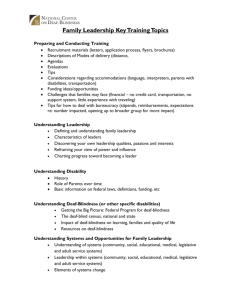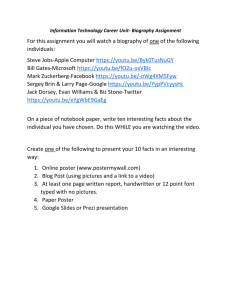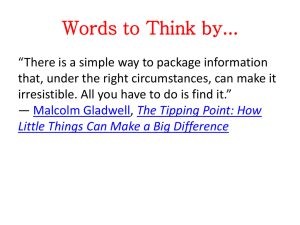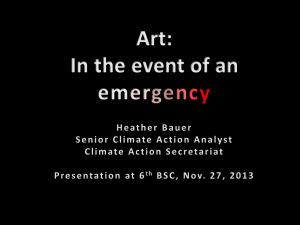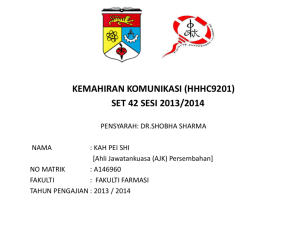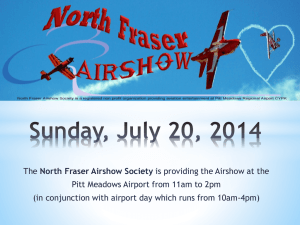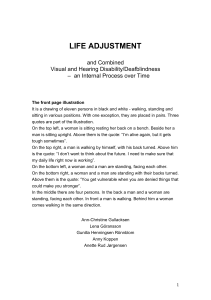Deaf-Blindness
advertisement
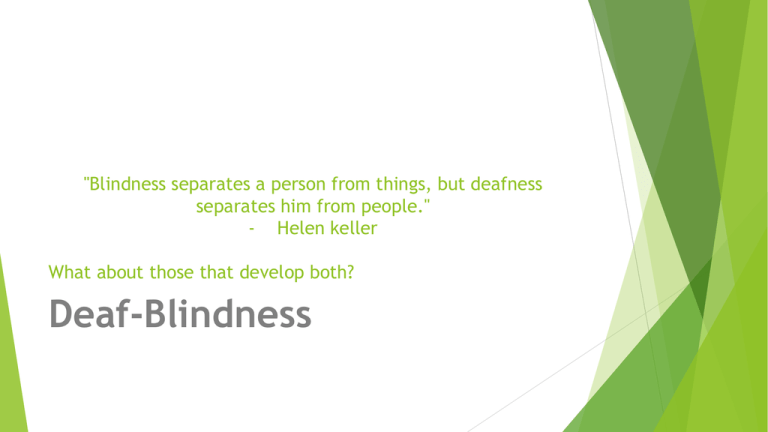
"Blindness separates a person from things, but deafness separates him from people." - Helen keller What about those that develop both? Deaf-Blindness IDEA Definition “concomitant [simultaneous] hearing and visual impairments, the combination of which causes such severe communication and other developmental and educational needs that they cannot be accommodated in special education programs solely for children with deafness and children with blindness.” 10,000 Children in the U.S. have some varying degree of deafblindness. More than 90% of children with deaf-blindness are classified to have other disabilities as well Deaf Blindness: Characteristics Central accuity of 20/200 or less in the better eye with corrective lenses. Peripheral diameter of vision subtends angular distance of no more than 20 degrees. Hearing impairment in which most speech cannot be understood Children with deaf-blindness suffer from varying degrees of vision/hearing loss, requiring unique needs/preferences in the classroom. Most children with deaf-blindness suffer from other disabilities. Characteristics of Students with DeafBlindness in the Classroom Withdrawn and inwardly focused. A need to feel secure Difficulty developing concepts. Difficulty with communication and interaction. Notable Characteristics as Warning Signs Hearing Vision Frequent rubbing or blinking of eyes. Failure to pay attention to casual conversation. Poor reading Frequent ear infections. Tilting head when reading Withdrawing from interaction. Poor hand-eye coordination Watching a speaker intently. Avoiding close work Limited speech or vocab Short attention span or daydreaming Placing head close to book or desk when reading/writing Frequent headaches Frequent mispronunciation. Learning Strategies for Success Education of Students with deaf-blindness MUST be highly individualized. *Without constant interaction, the student may feel isolated Comfort in environment Hand in hand guidance Includes tactile signing, body signing, and key word signing. Tactile Representation- Object based schedule Tactile Representation- In-Class activities Use of touch cues as feedback, directives, information and comfort. Technology- access to braille texts, “braillenote”, braille production system, “Face to Face” technology. Routine and repetition Resources for Knowledge NFADB.org- National Family Association for Deaf-Blind http://www.ed.gov/about/offices/list/osers/osep - Resource for educators Perkins.org https://youtu.be/OXj91vAFmGw - Video on Hellen Keller Institute for the blind https://youtu.be/l8yXWactj38 - Video on Hands on Hands method https://youtu.be/zedbip3hkOg - Haben Girma https://youtu.be/44VEwsBfux0 - Haben Girma on Technology
